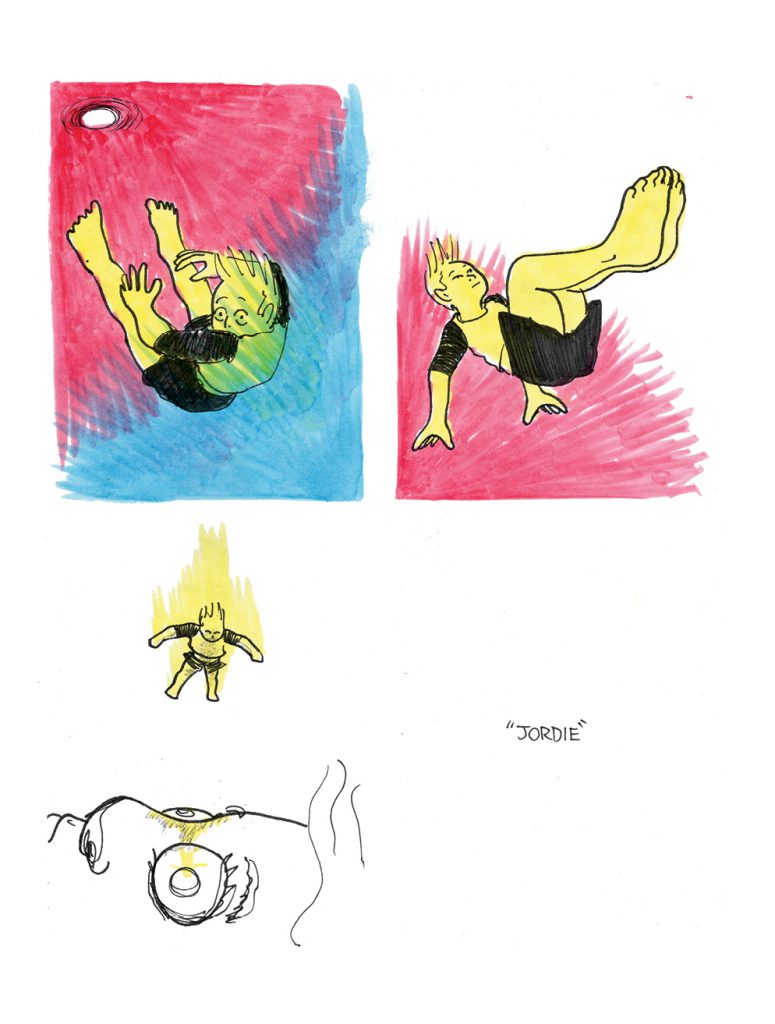Aaron here today with Shaw/Willumsen; Fox & Gal; Hernandez/Salinger; Josef Albers in Mexico (at the Guggenheim); Polish Animation; Domino Print Mag
—————————————————————————————————
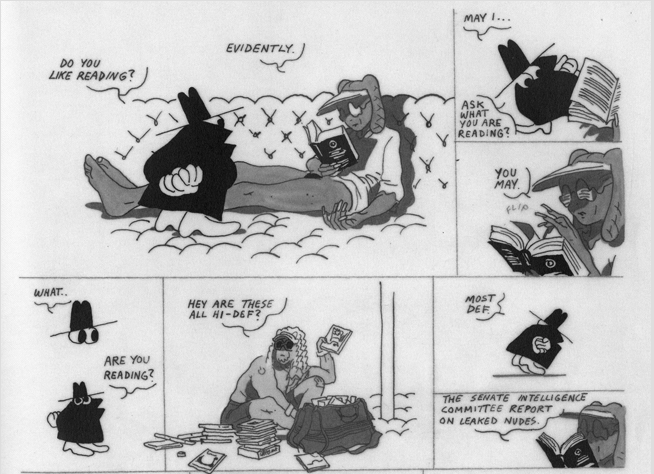
‘I think of the workspace as like mood and posture, surfaces and height, very physical, and then communication or information possibilities are something else.’
Caleb linked to this in yesterday’s newspost, Dash Shaw’s interview with Connor Willumsen, but it’s worth a read if you haven’t yet had the chance. It’s always nice to see cartoonists talking with each other about the work.
[SHAW]: But it’s an accumulation of all of these decisions that you’re making. You’re deciding to not draw these things and to draw things in a different way… I get what you’re saying, that it’s intuitive, but you’re still creating the conditions. It’s not like those things happen to you.
[WILLUMSEN]: Right, but I guess I am sort of nurturing a perspective as if they are just happening to me. I’ve been giving some workshops lately and I’ve been telling people that it helps to get through a page, continue the narrative, by just blowing the space on the page they’re currently working on, you know, like waste a lot of space and draw something small in an expansive void. The way I look at the way the book did turn out has a lot to do with how I was feeling while I was making it, because I was trying to make it quick, like as close as I could to the speed of reading a comic, which is impossible, and so I was subject to my immediate state during any particular page. So if I was feeling bogged down with a page, if it I was feeling it was becoming too laborious for me in its detail or pace, if it was boring me, I would blow a lot of space on the page to get through that moment and start fresh at the next, and my thinking is if I had a intuition that that needed to happen, just for my own wellbeing in that moment, the reader would have similar intuitions during the reading experience. Like if I’m getting bogged down by a page so is the reader, and to give myself drawing space is to give the reader space at the same appropriate moment, as if at the same moments we would feel the same moods or rhythms, even though we can’t possibly read and draw at the same speed.
—————————————————————————————————
Almanac 2017, Orbiting, Meow De Vivre
Over at the High-Low blog, Rob Clough looks at recent work by Iona Fox and Penina Gal.
Fox’s comics have two built-in advantages. First, in her occupation as a farmer and mountain cabin caretaker, she simply does things that no other cartoonist talks about. Second, her sense of humor is extremely sharp, and she’s able to bring humor to any situation. Fox also brings the perspective of someone with a number of intellectual interests, as her degree is in geology, she knows quite a bit about meteorology and it goes from there. Her self-caricature is one of my favorites, with a “fox curl” on top of her head and a collection of freckles, knobby knees and jumbled limbs. Her strips can range from a relationship strip about geese to a beautiful series of shots of sunsets. The strips pre and post Trump’s election certainly have a different tone, as she touches both on politics and protecting those around her. There are strips about undocumented dairy workers and their struggle for improved conditions.
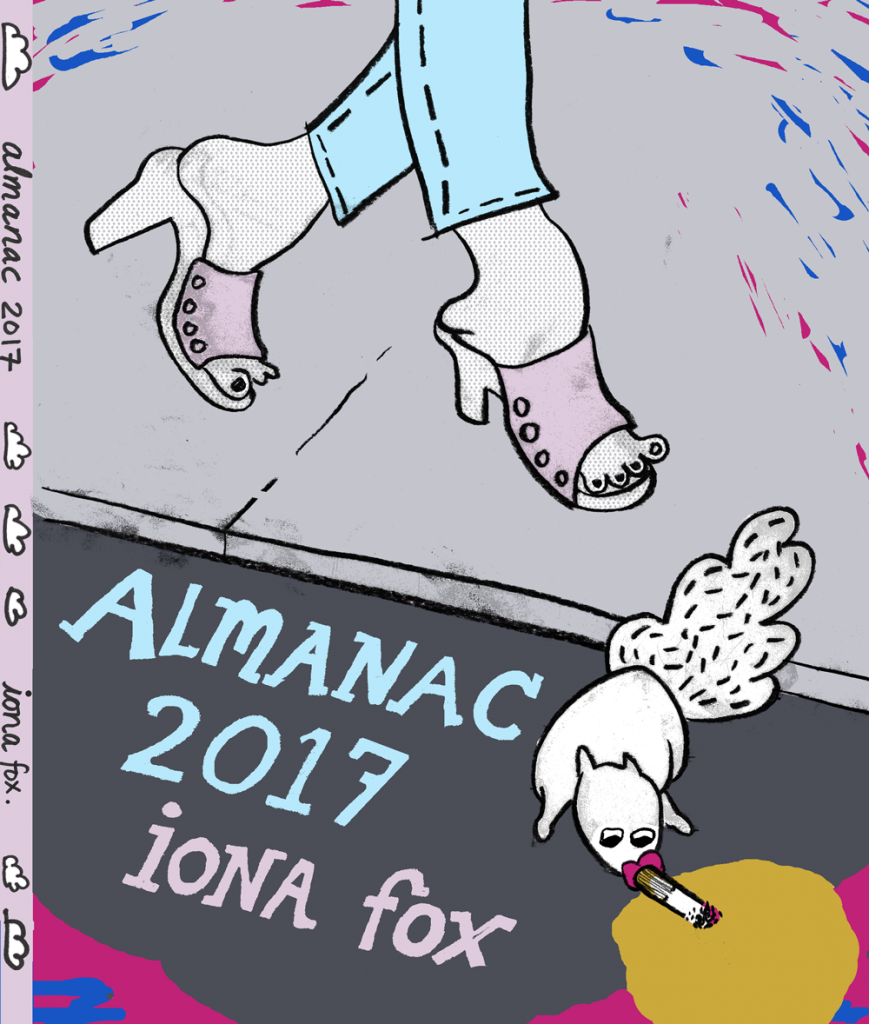
…
Meow De Vivre is a much sillier project, but it’s also visually distinctive. Originally designed for gallery space at a hair salon, Gal actually does something original with cat cartooning. The “Singles In Your Area” page is hilarious, with profiles from “OK Catnip”. There are “pawdicures”, trash talk about dogs, cat selfies, cat haute couture, and a clever collage. Gal has an eye for gag humor that’s never been obvious in some of her other work (with the exception of Glamera, which she did with Betsey Swardlick), but it stands out here in page after page celebrating cats as familiar creatures or as performing drag. Once again, Gal’s watercolors are the main attraction, grabbing the eye without looking too garish. Being in a gallery, that use of color was obviously crucial for an audience, but it worked just as well on the page.
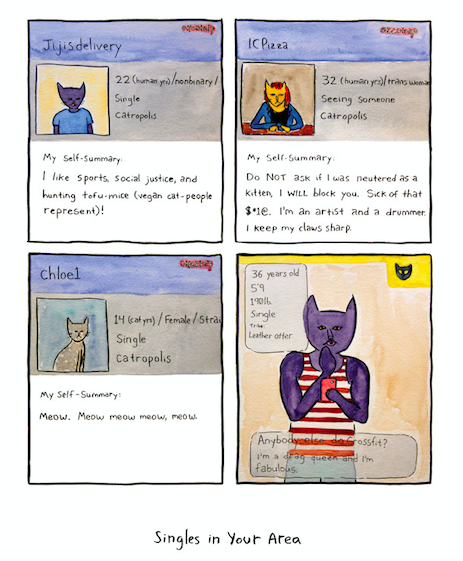
—————————————————————————————————
Reading ‘Catcher in the Rye’ Today
Via Gilbert Hernandez, over at the NY Times.
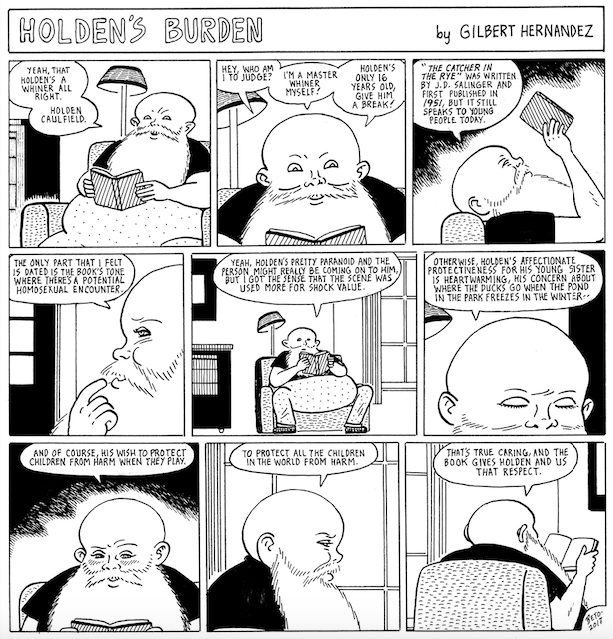
—————————————————————————————————
Guggenheim Museum Presents Josef Albers in Mexico
Albers’s collaged images also suggest a nuanced relationship between the geometry and design elements of pre-Columbian monuments and the artist’s iconic abstract canvases and works on paper. Several of the latter are titled after key sites in Mexico, and formal resonances between the two bodies of work become apparent, especially when viewed together as in the Guggenheim presentation. Albers’s embrace of pre-Columbian imagery may be considered within the complex and often-fraught history of modernist artists looking toward non-Western cultures for source material. His work contrasts with that of the revolutionary Mexican artists with whom he met on his trips, including Diego Rivera. At the same time, Albers’s long-term commitment to studying Mexican art and architecture also positions him as a prescient figure in the history of post–World War II American art, when artists such as Donald Judd, Ad Reinhardt, and Robert Smithson looked toward ancient traditions with a new sensitivity and self-awareness.
—————————————————————————————————
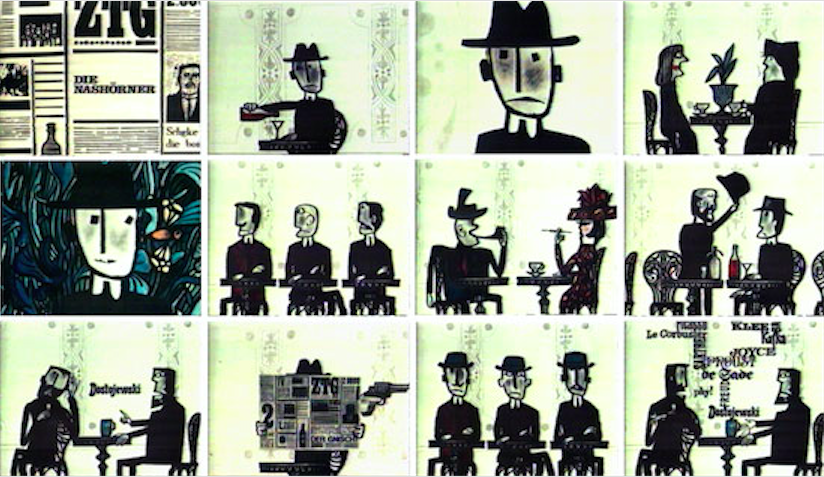
At Anthology Film Archives: The 70th Anniversary of Polish Animation
Polish jazz and abstract art, posters in motion and inspired collages created by outstanding visual artists like Jan Lenica and Walerian Borowczyk – it can all be found in Polish animation. These films are almost invariably auteur works: the directors themselves discover the stories, write the scripts, draw, paint, shape the plasticine, sculpt the plaster, and sometimes even record the musical scores for their films. Polish animation has long been celebrated for its dark, black humor and courage in exploring the human psyche. Under communism, it mastered the art of the metaphor, in order to elude censorship. Social satire has always been a Polish specialty.
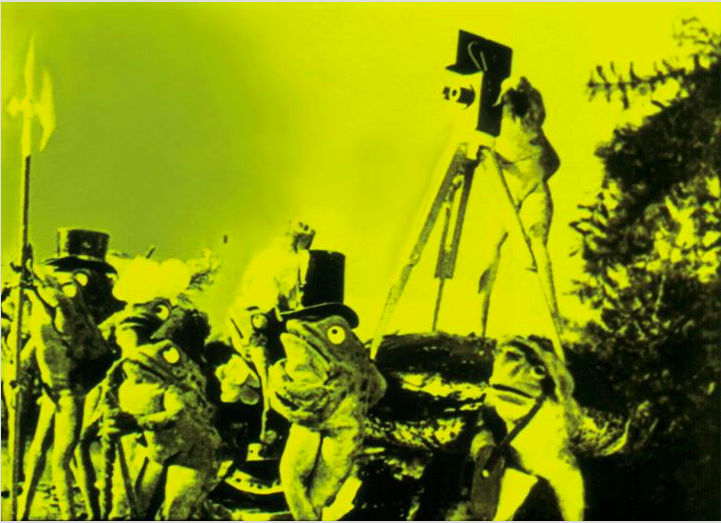
—————————————————————————————————


